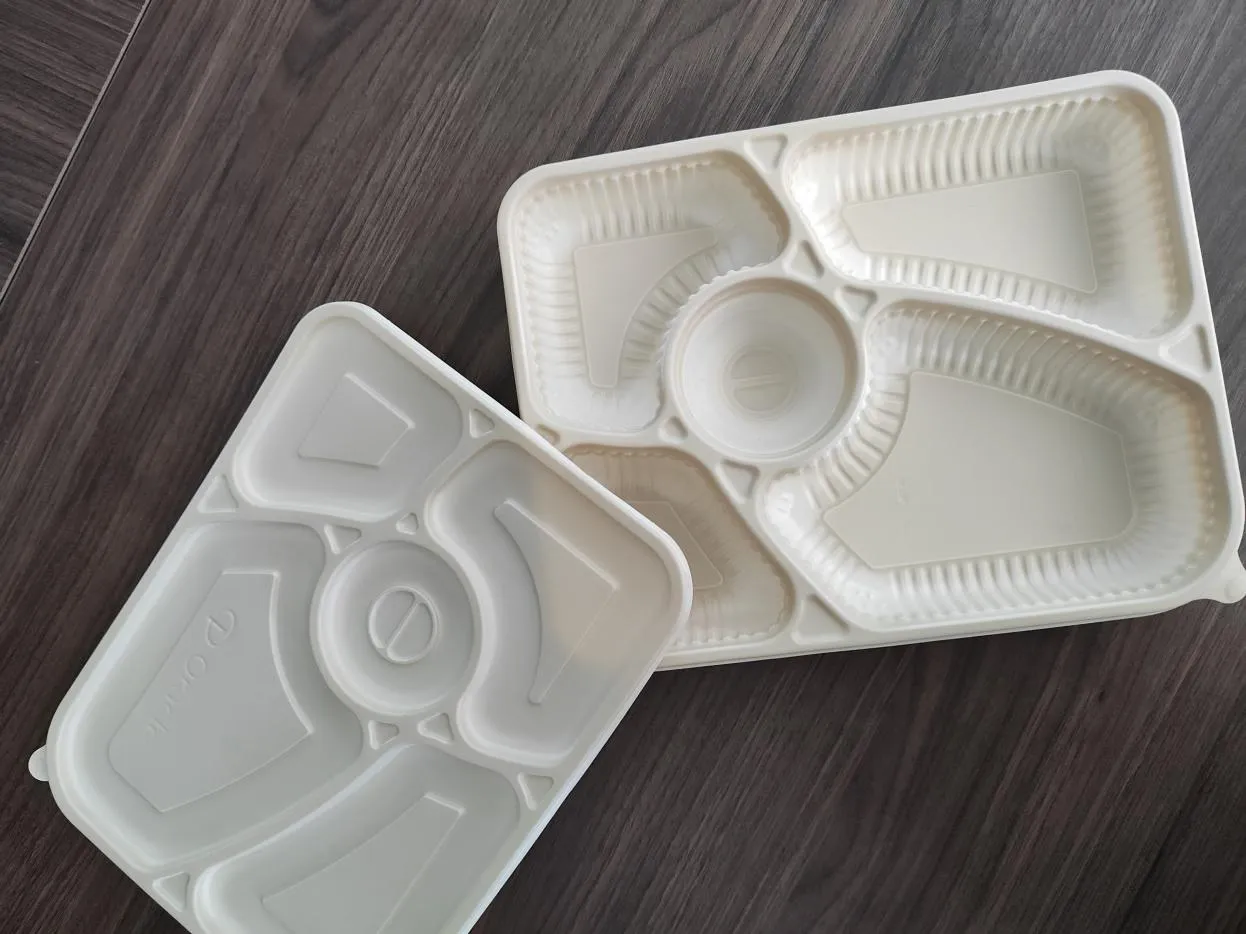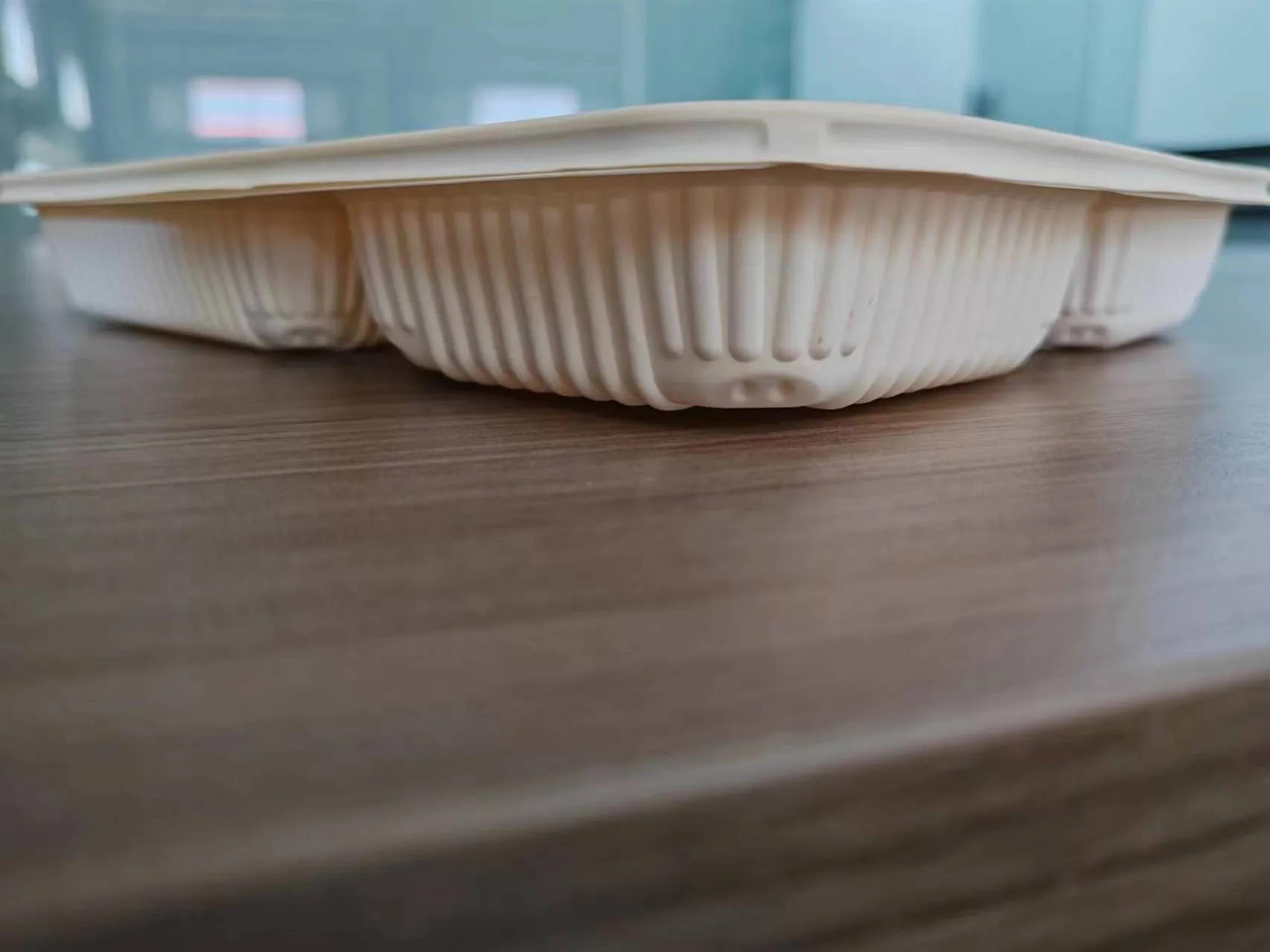Corn Starch and PP Composite Material: Innovative Application in Biodegradable Corn Starch Boxes
Introduction
With the global awareness of environmental protection continuously increasing, reducing plastic pollution and promoting the use of biodegradable materials have become the focus of attention. The combination of corn starch and polypropylene (PP) in composite materials for corn starch boxes has emerged as an important green packaging solution due to its excellent performance and environmental friendliness. This article provides a detailed introduction to the properties, manufacturing processes, application fields, and environmental impact of corn starch and PP composite materials, and explores their future development prospects.
1. Basic Properties of Corn Starch and PP Materials
Properties of Corn Starch
Corn starch is a natural polysaccharide with amylose and amylopectin as its main components. It has the following properties:
– Biodegradability: Corn starch can be decomposed by microorganisms in the natural environment, producing carbon dioxide and water.
– Abundant Resources: As a major global grain crop, corn provides a plentiful supply of corn starch.
– Non-toxic and Harmless: As a food-grade material, corn starch is safe for human use.
Properties of Polypropylene (PP)
Polypropylene (PP) is a thermoplastic polymer widely used in various plastic products. It has the following properties:
– High Mechanical Strength: PP has excellent impact resistance and wear resistance.
– Heat Resistance: PP has a high melting point and remains stable at high temperatures.
– Chemical Stability: PP is resistant to many chemicals and does not easily undergo chemical reactions.
2. Preparation of Corn Starch and PP Composite Materials
Combining corn starch with PP to create composite materials allows the advantages of both to be utilized while overcoming the limitations of each individual material. The preparation process primarily involves raw material pretreatment, mixing, extrusion, and molding.
Raw Material Pretreatment
Pretreatment of corn starch is necessary to improve its compatibility with PP. Common pretreatment methods include:
– Drying: Removing moisture from the corn starch to prevent bubble formation during processing.
– Surface Modificatio: Using physical or chemical methods to alter the surface characteristics of the corn starch to enhance its bonding with PP.
Mixing
The pretreated corn starch and PP are mixed in specific proportions. To ensure uniform mixing, a twin-screw extruder is usually employed. During mixing, the addition of plasticizers, coupling agents, and other additives can further improve the performance of the composite material.
Extrusion
The uniformly mixed corn starch and PP composite material are extruded and shaped using an extruder. Temperature and pressure control during extrusion is crucial to ensure material uniformity and quality.
Molding
The extruded material is molded into corn starch boxes using processes such as injection molding and compression molding. Strict control of process parameters during molding ensures product dimensional accuracy and surface quality.
3.Characteristics and Advantages of Corn Starch and PP Composite Materials
Corn starch and PP composite materials in corn starch boxes exhibit the following significant characteristics and advantages:
Excellent Mechanical Properties
The composite material of corn starch and PP has high mechanical strength and toughness, making the corn starch boxes durable and resistant to breakage under external forces.
Good Heat Resistance
Due to PP’s high melting point, the corn starch and PP composite material also has good heat resistance, maintaining stability at high temperatures. This makes corn starch boxes suitable for use in microwave heating and other high-temperature environments.
Environmental Friendliness
Corn starch’s biodegradability allows corn starch boxes to naturally degrade after disposal, reducing environmental pollution. Although PP is not biodegradable, incorporating a certain proportion of corn starch significantly reduces its environmental impact.
High Resource Utilization
Combining corn starch with PP maximizes the use of renewable resources while leveraging PP’s excellent properties. This high resource utilization contributes to sustainable development.
4. Application Fields of Corn Starch and PP Composite Materials
Corn starch and PP composite materials in corn starch boxes have broad application prospects in various fields, including food packaging, tableware, medical supplies, and agricultural tools.
Food Packaging
Corn starch boxes can be used for various food packaging applications, such as fast food containers and beverage cups. Their excellent mechanical and heat-resistant properties make them advantageous in the food packaging industry, especially in high-frequency use scenarios like takeout and fast food.
Tableware
Corn starch boxes can also be used to produce disposable tableware such as knives, forks, and spoons. These items naturally degrade after use, causing no environmental pollution, making them ideal for outdoor activities and banquets.
Medical Supplies
In the medical field, corn starch boxes can be used to manufacture disposable medical supplies such as pill boxes and reagent containers. These supplies can be safely disposed of after use, reducing the environmental impact of medical waste.
Agricultural Tools
Corn starch boxes can also be used to create agricultural tools like seedling trays and flowerpots. Their biodegradability offers unique advantages in agriculture, as they can be directly buried in soil after use, leaving no waste.

5. Environmental Impact of Corn Starch and PP Composite Materials
The combination of corn starch and PP in composite materials for corn starch boxes has positive environmental effects, primarily in the following areas:
Reducing Plastic Pollution
Traditional plastic products are difficult to degrade in the natural environment, causing severe pollution. Corn starch boxes can naturally degrade, reducing plastic pollution and protecting the ecological environment.
Lowering Carbon Emissions
While corn starch boxes produce carbon dioxide and water during degradation, the overall carbon emissions throughout their lifecycle are lower due to their plant-based origin, helping to reduce greenhouse gas emissions.
Promoting Sustainable Development
Corn starch boxes use renewable resources as raw materials, aligning with sustainable development goals and promoting a transition to a green, low-carbon society.

6. Challenges and Prospects
Despite the numerous advantages of corn starch and PP composite materials in corn starch boxes, several challenges remain in practical applications, such as high costs and performance improvement. With ongoing technological advancements and the realization of large-scale production, the performance and cost of corn starch boxes are expected to be further optimized, leading to broader applications.
Cost Issues
Currently, the production cost of corn starch boxes is relatively high due to the complexity of modification treatments and production processes. Future innovations in technology and large-scale production are necessary to reduce costs and enhance competitiveness with traditional plastic products.
Performance Improvement
Although corn starch and PP composite materials have good mechanical and heat-resistant properties, there is still a gap compared to pure PP products. Further research on modification technologies and processes is needed to improve the overall performance of corn starch boxes.
Market Promotion
As a new material, corn starch boxes need increased market acceptance and awareness. Future efforts should focus on education, awareness campaigns, and policy support to promote the market adoption and application of corn starch boxes.
Conclusion
Corn starch and PP composite materials in corn starch boxes represent an environmentally friendly and biodegradable new material with excellent mechanical properties, heat resistance, and environmental benefits. They have broad application prospects in food packaging, tableware, medical supplies, and agricultural tools. Despite challenges in practical applications, technological advancements and market promotion hold promise for corn starch boxes to play a significant role in the field of environmentally friendly materials, contributing to sustainable development goals.


